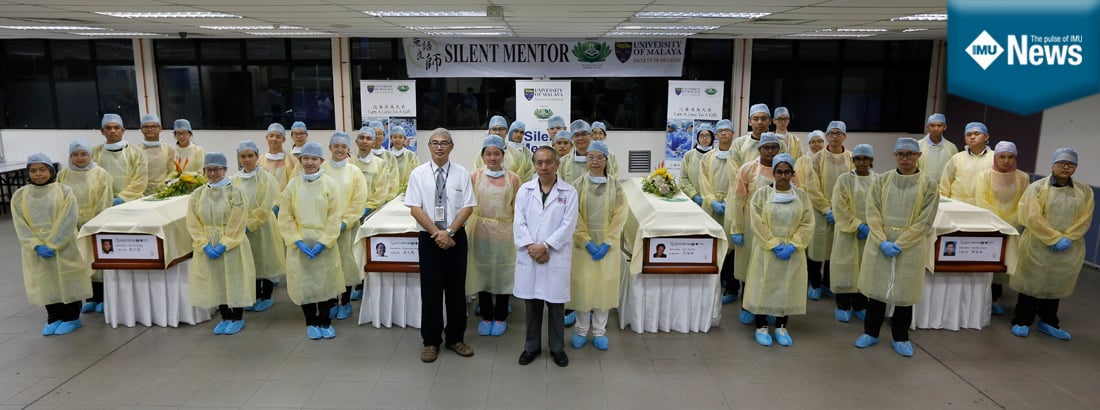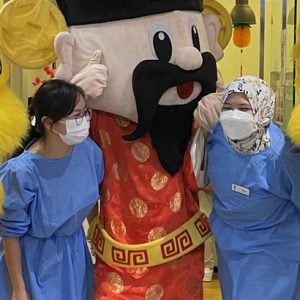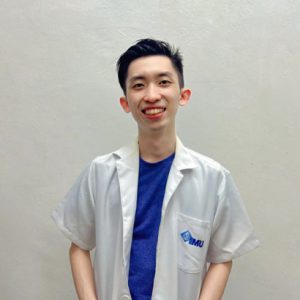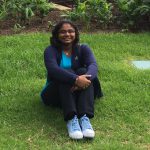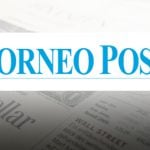Acupuncture is increasingly used worldwide. It is becoming more accepted by both patients and healthcare providers. For many years, medicine has benefited from scientific study whilst critics view acupuncture practices as unscientific, unsupported by clinical trials, and sometimes dangerous. Teaching and learning in Acupuncture steeped in Western conventions, such as International Medical University (IMU) Master of Science in Acupuncture programme (MSc Acupuncture) has been avidly supporting the research of acupuncture points for safe needling practices. Today modernised acupuncturists are increasingly often speak of the need to seek scientific investigation to patient safety.
On 20 June 2019, the IMU MSc Acupuncture students together with lecturers attended acupuncture anatomy workshop conducted in a cadaveric dissection session at the Silent Mentor Academy.
“Gone were the days when acupuncture was taught by sifu to their disciples. The acupuncture knowledge we are learning now has been integrated with western medicine knowledge, taught with proper syllabus as stringent as western medical schools. In due time, when both traditional Chinese medicine practitioners and western medicine practitioners complement each other, the patients will gain the most benefit”, Dr Liu CY, a qualified practising anaesthesiologist postulated. “Working in the anaesthetic line, I do a fair share of inserting needles for many procedures. Acupuncture has always intrigued me because an acupuncturist would insert multiple filiform needles directly to a patient’s body. These points are called acupuncture points (acupoints) and are being used in our modern medicine practices. For example, to reduce nausea and vomiting after an operation or to rehabilitate patients after stroke,” he added. 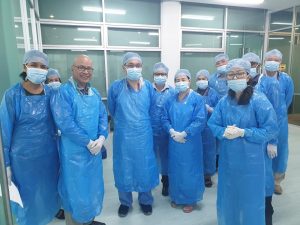 “I soon learnt that there are as many as 361 acupoints on our bodies, running through 14 main channels called meridians that transport qi and blood through the whole body. This complex system of meridians and acupoints were described as early as two thousand years ago in ancient Chinese medical texts and is still being used today. One would wonder how the ancient Chinese could discover all these”. “My interests lead me to enrol in MSc Acupuncture programme offered by IMU. To my surprise, in IMU, this ancient medical knowledge was taught with modern syllabus equivalent to western medical courses. We had an anatomist who taught us detailed anatomy structures and layers of acupoints in modern medical terms. We even had cadaveric dissection session to see first-hand the structures and organs near many acupoints. This was important as it emphasised the safety aspects of acupuncture. The dissection session at the Silent Mentor Academy was a memorable experience”.
“I soon learnt that there are as many as 361 acupoints on our bodies, running through 14 main channels called meridians that transport qi and blood through the whole body. This complex system of meridians and acupoints were described as early as two thousand years ago in ancient Chinese medical texts and is still being used today. One would wonder how the ancient Chinese could discover all these”. “My interests lead me to enrol in MSc Acupuncture programme offered by IMU. To my surprise, in IMU, this ancient medical knowledge was taught with modern syllabus equivalent to western medical courses. We had an anatomist who taught us detailed anatomy structures and layers of acupoints in modern medical terms. We even had cadaveric dissection session to see first-hand the structures and organs near many acupoints. This was important as it emphasised the safety aspects of acupuncture. The dissection session at the Silent Mentor Academy was a memorable experience”.
MSc Acupuncture student, Dr Chan SY spoke, “For acupuncture students, the opportunity of observing real anatomy structure adds value to our knowledge. We have better grasp of critical areas of anatomy structure which will enhance our confidence when performing treatment at dangerous areas and reduce the risk of accidents such as pneumothorax, injury to the brain stem and major blood vessels”.
“We are grateful and thankful to all who made this happen. To the Silent Mentor, we are truly indebted to the opportunity of the dissection session on acupoints, learned to perfect my acupuncture practice that will benefit many people in time to come. Although it was very tiring at the end of the day, suturing up what we have dissected, we are able to complete it with the spirit of teamwork. We are grateful to be given this opportunity to enhance our knowledge. Nothing could have happened if no one takes the first step. I have never been able to do so much dissections during my years as a medical student,” Dr Chan SY added. MSc Acupuncture student Dr Yong WT reflected “Despite the years of studying as a medical doctor of medicine overseas, this is the very first time I have heard of the existence of the Silent Mentor Programme in Malaysia, I never knew that a “Silent Mentor” means preserving a body to be used during teaching. I still remember the night when another classmate and I first come across the word “silent mentor”, both of us were thinking it was an online application or system which was used to guide us on our route of learning”. 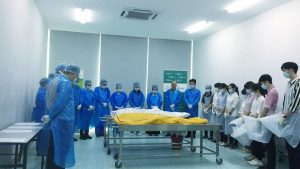 “We were impressed with the stories and journeys of each silent mentor, these acoustic understandings of their life story means a lot to us, as the medical doctors benefited from their gestures of great contribution to complete our acupuncture anatomy trainings. We must say the learning outcomes of this acupoints anatomy workshop is beyond mere academic learning, we learnt about the act of giving and community care, we truly respect and feel thankful to all silent mentors, and their family members for their selflessness decision to benefit the medical community and create better medical practitioners in near future for the safety of mankind. Kudos to all for making this happen in our modern acupuncture learning.” Founder of Silent Mentor Programme Professor Dr Chin Kin Fah, explained that the key difference between the ‘Silent Mentor’ and conventional cadaveric dissection workshops is that of ‘consent’: the ‘Silent Mentor’ or ‘donors’ have fully consented for their bodies to be used for dissection or training. This mirrors consent taking before any procedure in medical/surgical practice and helps build a foundation of ethical practice among medical students and professionals. The Silent Mentor workshop is a complex interaction between the donors, their families, the staff, medical students, medical professionals and involves a series of steps which includes home visits, initiation ceremonies, gratitude ceremonies and finally a funeral service. Related article: IMU Student’s Experience: Silent Mentor Programme @ University of Malaya
“We were impressed with the stories and journeys of each silent mentor, these acoustic understandings of their life story means a lot to us, as the medical doctors benefited from their gestures of great contribution to complete our acupuncture anatomy trainings. We must say the learning outcomes of this acupoints anatomy workshop is beyond mere academic learning, we learnt about the act of giving and community care, we truly respect and feel thankful to all silent mentors, and their family members for their selflessness decision to benefit the medical community and create better medical practitioners in near future for the safety of mankind. Kudos to all for making this happen in our modern acupuncture learning.” Founder of Silent Mentor Programme Professor Dr Chin Kin Fah, explained that the key difference between the ‘Silent Mentor’ and conventional cadaveric dissection workshops is that of ‘consent’: the ‘Silent Mentor’ or ‘donors’ have fully consented for their bodies to be used for dissection or training. This mirrors consent taking before any procedure in medical/surgical practice and helps build a foundation of ethical practice among medical students and professionals. The Silent Mentor workshop is a complex interaction between the donors, their families, the staff, medical students, medical professionals and involves a series of steps which includes home visits, initiation ceremonies, gratitude ceremonies and finally a funeral service. Related article: IMU Student’s Experience: Silent Mentor Programme @ University of Malaya




